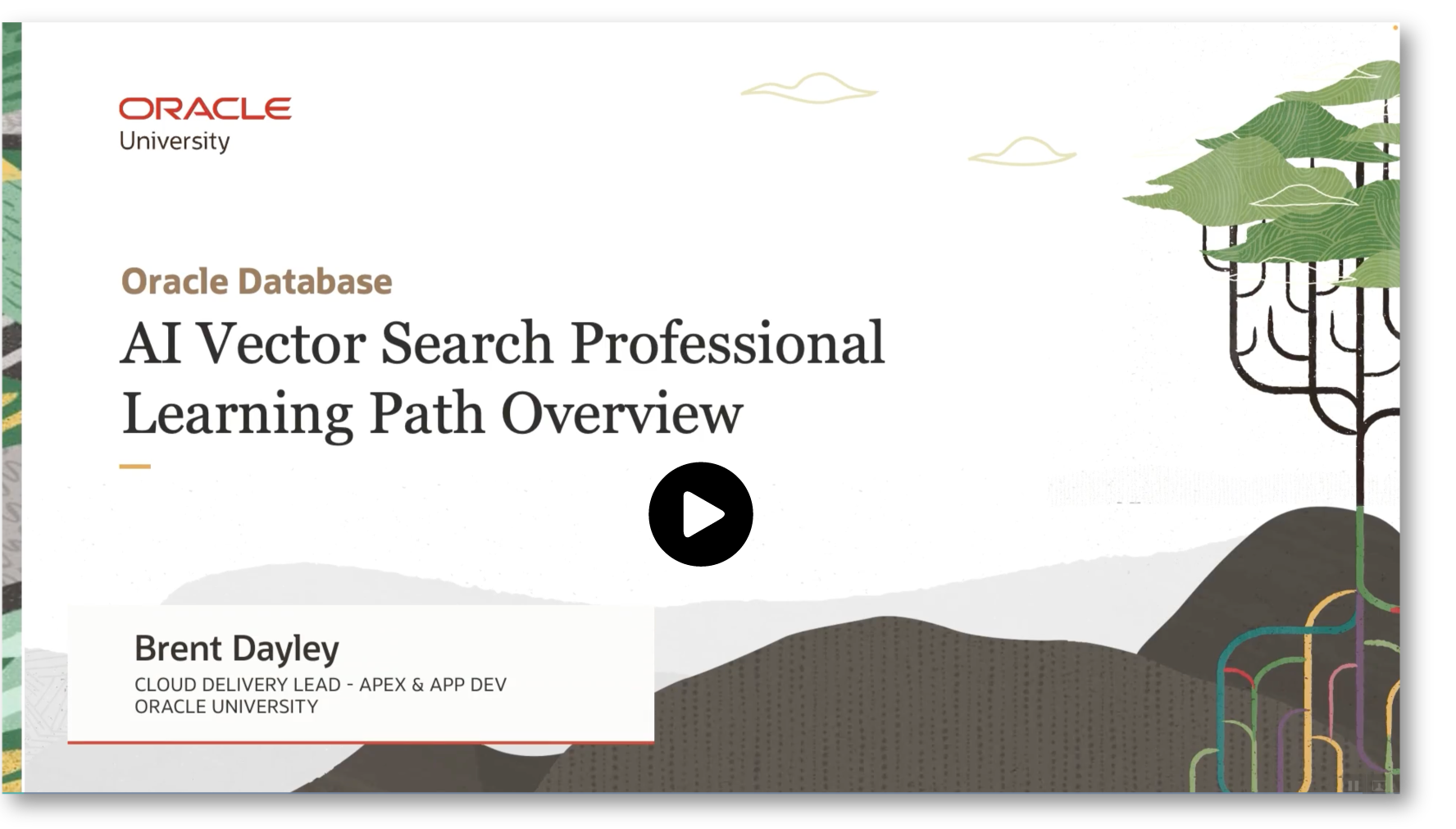Have you ever used voice assistants, chatbots, language translators, recommendation systems, or video search and recognition tools? If so, you have already experienced the power of vector embeddings! These are mathematical representations of data that capture their semantic meaning, enabling machines to understand and interpret complex information.
With Oracle Database 23ai, we have introduced the Vector data type and AI Vector Search —innovative technologies that redefine how vector embeddings are generated, stored, indexed, and queried. When paired with Large Language Models (LLMs), this technology unlocks new possibilities, such as smarter access to corporate data, seamless interpretation of external knowledge bases, and context-aware interactions. From personalized content delivery to advanced AI applications, AI Vector Search is quickly becoming a cornerstone of the LLM application ecosystem.
To empower individuals and organizations to harness this transformative technology, we are delighted to announce the Oracle AI Vector Search Professional Certification and Course!
Limited-Time Offer: Get Certified for Free!
We’re making it easier than ever for you to earn this industry-leading certification! From today until May 15, 2025, we are waiving the $245 certification exam fee.
To activate this free promotion, simply click this link (also available on the learning path overview page). Once activated, you will receive one free exam attempt, valid until May 15, 2025. You can verify your free exam attempt in your exam wallet. To access it, click on your MyLearn account in the top-right menu.

Don’t miss this opportunity to elevate your skills at no cost!
Learning Path Overview
The Oracle AI Vector Search Professional Certification Learning Path includes three expertly designed courses:
Oracle AI Vector Search Fundamentals: Start here to build a solid foundation in vector data types, DML and DDL operations, vector distance functions, and related concepts. This course is ideal if you are new to Oracle AI Vector Search.
Oracle AI Vector Search Deep-Dive: Dive deeper into embedding models, Retrieval-Augmented Generation (RAG) workflows, and the integration of Oracle AI Vector Search with OCI Generative AI service. In this course, you can also learn more about AI capabilities in Exadata, GoldenGate, and Data Pump. Complete the Fundamentals course before tackling this one.
Autonomous Database Select AI: This final course focuses on leveraging Select AI for natural language interactions with your private data. Learn how to use Select AI + RAG effectively and maximize the potential of Oracle Autonomous Database.
What You’ll Learn
By completing the learning path, you’ll gain mastery in:
- Building RAG applications with Oracle AI Vector Search.
- Generating vector embeddings both inside and outside Oracle Database 23ai.
- Designing and executing vector similarity searches.
- Creating and managing vector indexes for high-performance searches.
- Managing vector datasets with ease.
- Using Exadata, GoldenGate, and Data Pump for AI-driven workflows.
- Querying private data with natural language through Select AI.
With just 8 hours of total course content, you can become proficient in these technologies within a week, regardless of your prior experience. By the end, you’ll have a comprehensive understanding of vector embeddings, RAG, and the role of Oracle AI Vector Search in LLM applications.
Check out our course overview video for more details!
Certification Exam Details
After completing the learning path, you’ll have the opportunity to validate your skills with a professional-level certification exam. This 90-minute test includes 50 questions and requires a passing score of 68%. The exam covers the following objectives:
| Exam Objectives |
% of Exam |
| Understanding Vector Fundamentals |
20% |
| Using Vector Indexes |
15% |
| Performing Similarity Search |
15% |
| Using Vector Embeddings |
15% |
| Building a Retrieval Augmented Generation (RAG) solution |
25% |
| Leveraging related AI capabilities |
10% |
To help you succeed, we provide skill checks throughout the courses and a free practice exam modeled on the actual certification test.
Get Started Today!
- Access course materials: Learning Path
- Review exam topics: Certification Exam Topics
- Activate the promotion (valid until May 15, 2025): Promotion Activation
- Register and take the online exam: Certification Exam
We’re excited to support your learning journey and can’t wait to see you become an Oracle AI Vector Search Certified Professional! Once you’re certified, don’t forget to share your achievement on LinkedIn and tag us.
Good luck—and keep learning!

